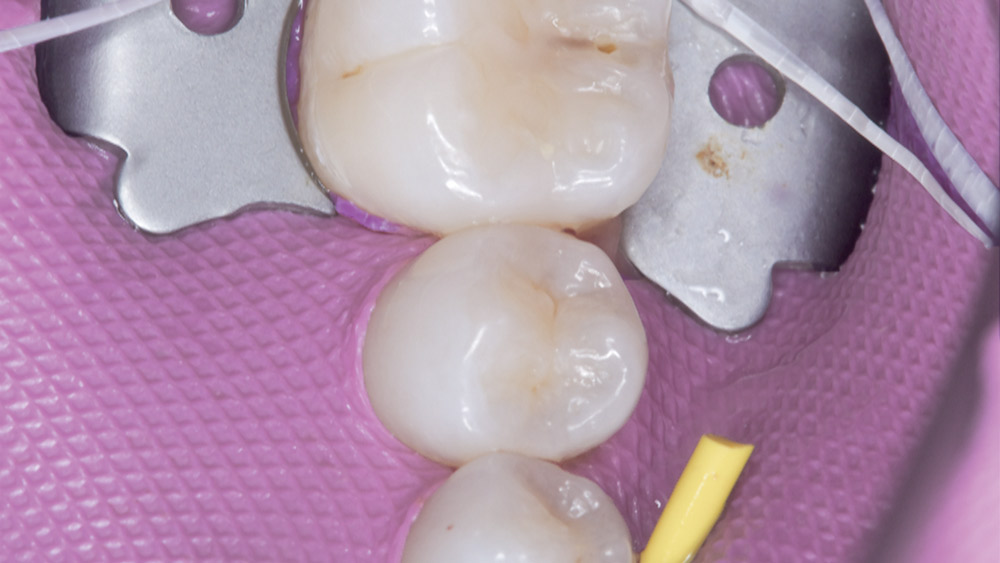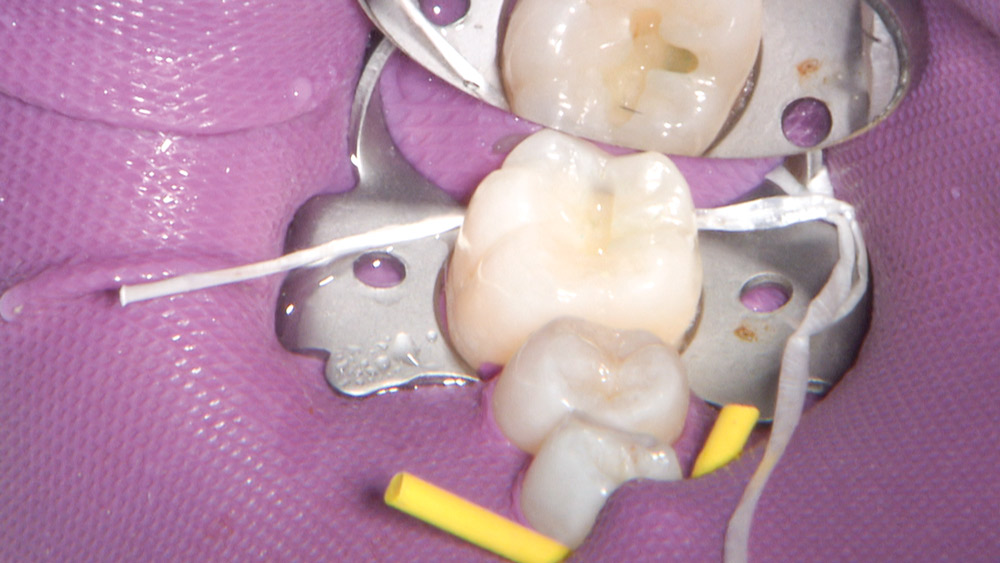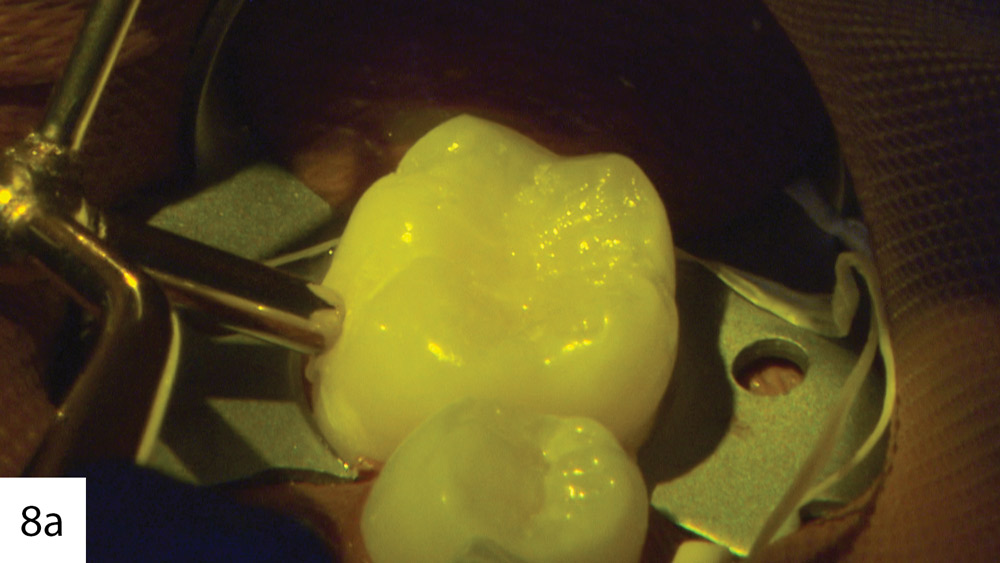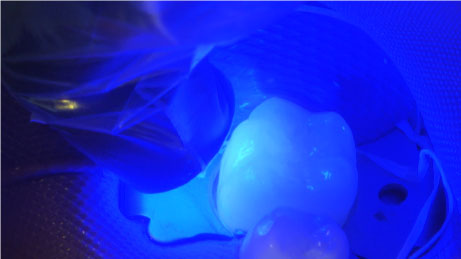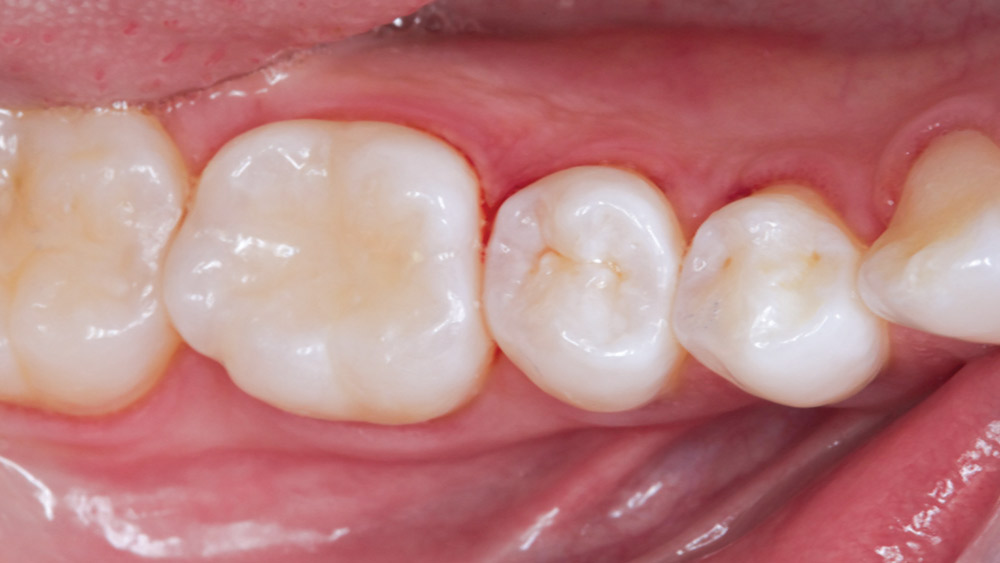Camouflage® NanoHybrid Composite – Case of the Week: Episode 158
In the Case of the Week for Episode 158 of “Chairside Live,” our very own cohost, Megan Strong, hopped into the dental chair for some necessary restorative care. I decided to use her case as an opportunity to demonstrate the esthetics and usability of Camouflage® NanoHybrid Composite (Glidewell Direct; Irvine, Calif.), a restorative material developed by the manufacturing arm of Glidewell Laboratories.
Figure 1: One relatively small cavitary lesion in an otherwise intact arch classifies Megan as a patient with low risk for dental caries. Using local anesthetic with vasoconstrictor, Megan received the rubber dam and was readied for the procedure. I like to use the rubber dam because it controls the soft tissue, increases visibility and keeps the working area dry. I think it’s essential to have a dry field to prevent contamination of the cavity by oral bacteria and to attain the best marginal seal for the restoration.
Figure 2: Here, I’m using a caries detector dye, which works by staining the collagen that has become denatured by the carious process.
Figure 3: Although this is a simple Class I preparation, the shape of this type of preparation can make it quite challenging. The shape of a Class I preparation is described as having the highest configuration factor (C-Factor), and is therefore the most susceptible to defect due to shrinkage stress.
Figure 4: Careful use of a porcelain bur in a slow-speed handpiece will remove all of the stained, infected soft dentin.
Figure 5: The cavity is acid-etched with 37% phosphoric acid, which will etch both the enamel and the dentin.
Figures 6a, 6b: After rinsing and carefully drying the cavity, OptiBond® Solo Plus™ (Kerr Corp.; Orange, Calif.) is applied for direct bonding to my restorative composite of choice: universal Camouflage NanoHybrid Composite.
Figures 7a, 7b: Because Class I restorations have an increased C-Factor, the contraction stress on bonded surfaces while curing can increase, too. In an attempt to control the shrinkage and to decrease the C-Factor, I like the cavity to receive small increments of composite.
Figures 8a, 8b: With proper lighting and by taking advantage of the ability of Camouflage NanoHybrid Composite to be built up using small, 2 mm increments, the chances for clinical success can be improved.
Figure 9: Camouflage Universal Nanohybrid Composite has a flexural strength of about 134 MPa. That strength, in combination with its esthetics and ease of manipulation, makes it an ideal restorative material for the oral environment.



